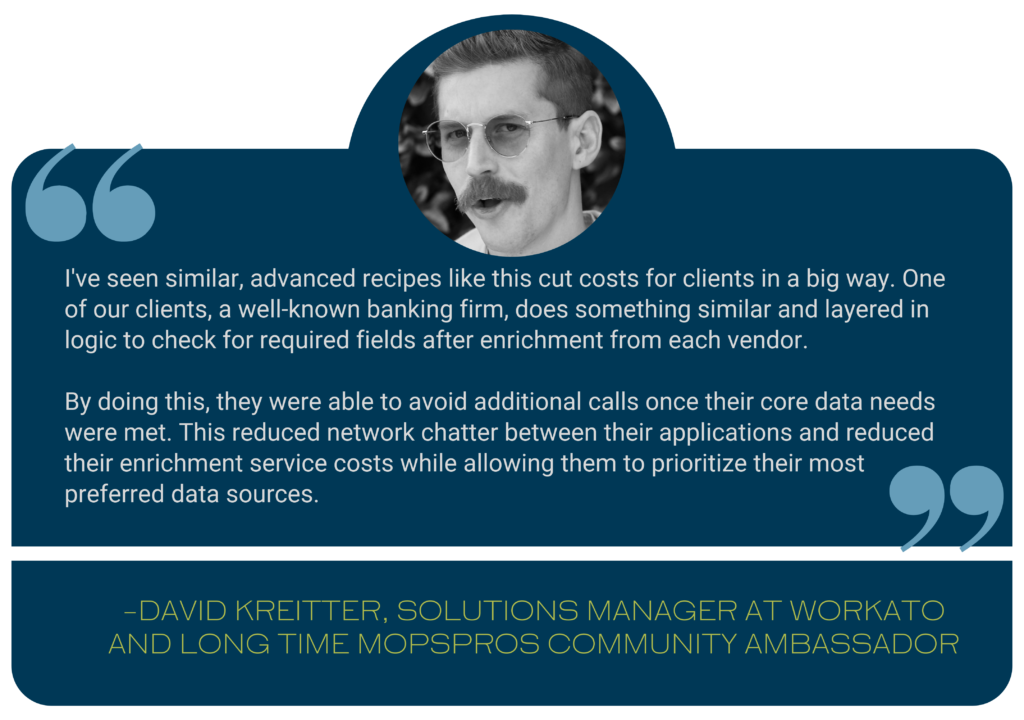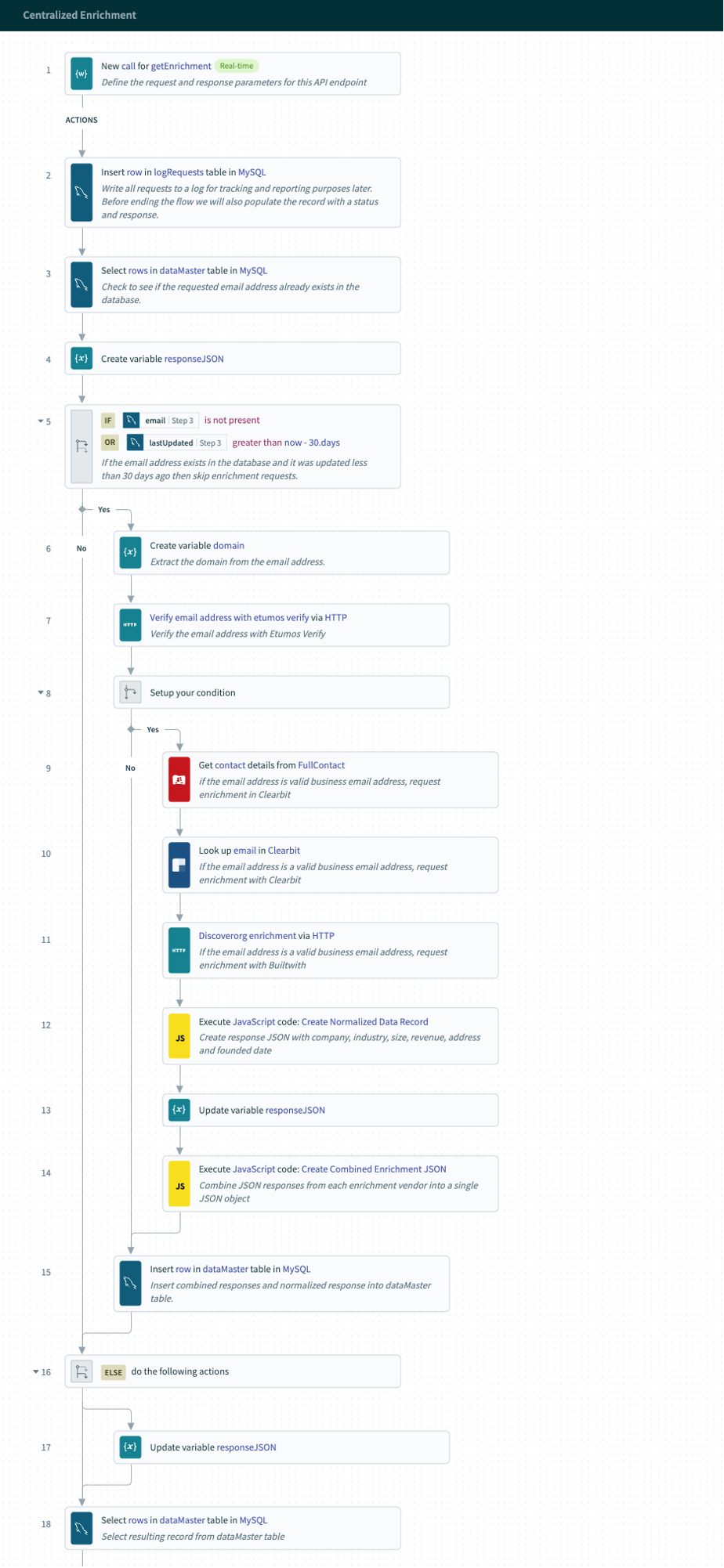(Part 2 of our series)
Previously, we discussed the importance of implementing a Centralized Data Enrichment service. Choosing the best way to implement a new system for your organization depends on several key factors. You need to consider: your current enrichment situation, the volume of records, budget, and available infrastructure. We have put together three options to fit your needs.
It’s Time to Consider Your Options
1. Build Your Own
We highly recommend building your Centralized Enrichment service with iPaaS tech like Workato. With its native connectors to many of the enrichment and database services you’re likely to use, Workato can securely handle high volumes of requests from across your MarTech stack including a highly trafficked website.
To get started, create a SQL database in Google Cloud, Amazon, or Microsoft Azure to store your responses (you can use any database you’d like as long as you can access it with Workato). I like to create a data table as well as a logging table for monitoring purposes. Create a recipe in Workato that triggers off of a webhook and accepts an email as a parameter – you’ll need the API Platform feature for this. Be sure to enable an authorization header for security.
Build out your flow to take the following steps:
- Log the incoming request (optional)
- Query the data table to see if there is an existing and up-to-date record.
- If the record exists, grab the data from the database and skip to step 8.
- If the record does not exist or is out-of-date, call each of your enrichment services either with the native connector or with a custom request from Workato.
- Combine all requests and create some logic to select which data points to use. For example, if DiscoverOrg company size is populated then use this otherwise use Clearbit or Demandbase.
- Create logic that cleans up or normalizes data values to meet data validation. Depending on the amount of data normalization needed, you might want to store this logic elsewhere or create a custom mechanism for transforming and validating data received. This should be saved in a variable to be used as the response from your service.
- Save both the original combined responses from all enrichment vendors and the cleaned normalized response you created into your database.
- Respond to the requestor with the normalized data.

You can see a rough build of this flow in Workato in the screenshot below.
2. Use a Customer Data Platform (CDP)
For organizations that have very high data volume (e.g. millions of transactions & records per day), CDP’s such as Segment can help to get up and running very quickly. If you already have a CDP or are planning to invest in one, this should be a key use case for it. CDP’s are specifically designed to help with enrichment and many other data enablement initiatives including data normalization, preference synchronization, and enabling the enterprise activity hub.
With a CDP, you’ll likely be enriching contact data in real-time and moving that data into a data warehouse. You can use Workato to create a similar API as already discussed, but instead of calling enrichment vendors, the API requests data from either your CDP or from the data warehouse and then back to the requesting application. This is a natural extension of a mature CDP implementation and we will go into further detail with a future blog post.
3. Start Simply and Quickly with FlowBoost
One way to create a centralized service quite easily would be to use Etumos FlowBoost. There is a common misconception that Flowboost can only be used with Marketo, but in reality, it can be called from any application.
With FlowBoost Standard Edition, you can call read remote services using Javascript so you can call each enrichment service and store their responses using the FlowBoost Counter feature. Your only limits here are:
- Your ability to write Javascript (since of course, this is what is used with FlowBoost)
- Your call needs to complete within 30 seconds so keep the logic simple
FlowBoost is a really simple option for getting started with centralized enrichment without a major investment. You can try FlowBoost for free. Learn more HERE or reach out to the Etumos team to help get you started with implementing a Centralized Data Enrichment Service.
But Wait, There’s More! …
Implementing a Centralized Data Enrichment service for your organization is going to maximize your enrichment ROI by controlling your costs and maximizing the quality of the data you receive. Once established, you’ll be able to solve other important problems such as how to use this service to help with Preference Management across your organization. Read our next post as we explore this opportunity and more.
Have questions, need help with implementation, or just want to give a hearty “hello?” We can help, set up a time to speak with one of our consultants.








